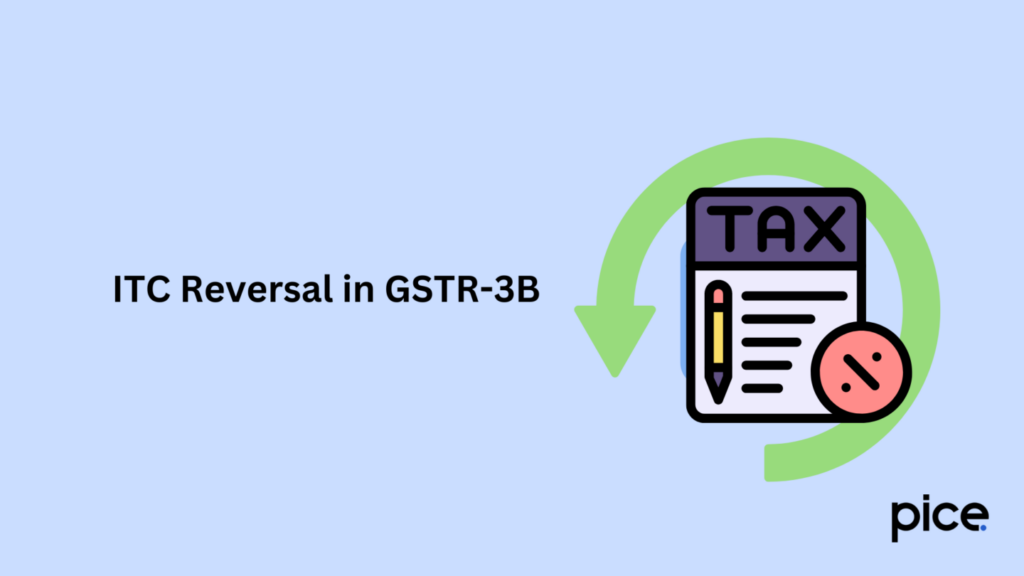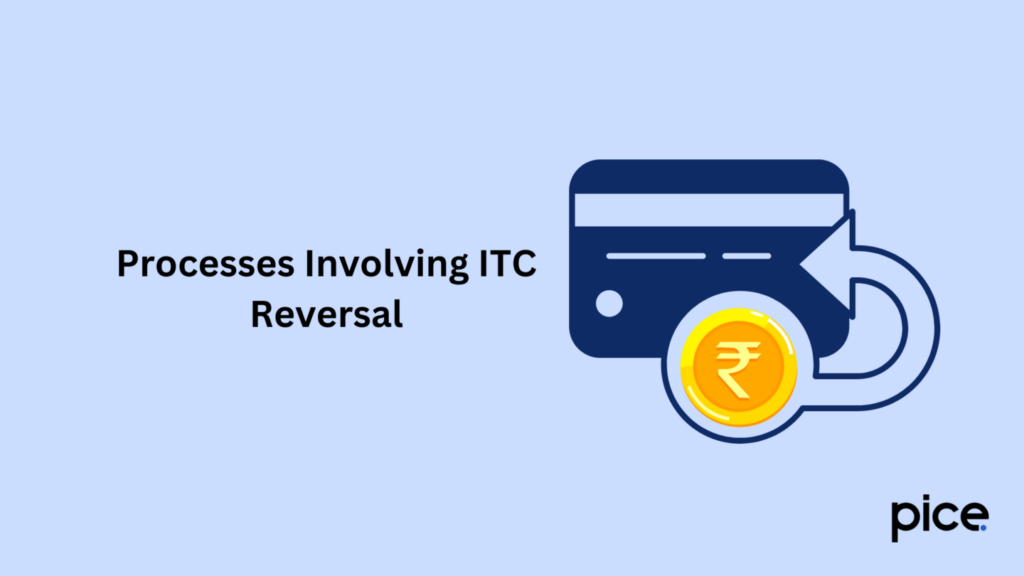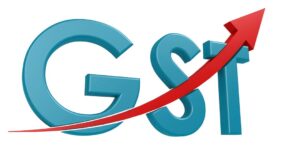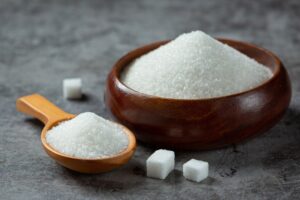How to Reverse Credit Note in GST?
- 6 Sep 24
- 10 mins

How to Reverse Credit Note in GST?
Key Takeaways
- ITC Reversal in GSTR-3B: Critical for compliance, businesses must reverse ITC on inputs used for exempt or non-business purposes accurately in GSTR-3B.
- Credit Notes and ITC: When issuing credit notes, ensure the corresponding ITC is reversed to reflect accurate tax liability.
- Capital Goods Usage: Proportionate ITC reversal is essential when capital goods are partly used for exempt or non-business purposes.
- Annual ITC Reconciliation: At the end of the fiscal year, reconcile ITC claimed with actual usage to adjust any discrepancies in subsequent GSTR-3B filings.
- Timely Adjustments: Amendments and corrections related to ITC reversal must be promptly reflected in GSTR-3B to avoid penalties and ensure GST compliance.
Input Tax Credit (ITC) is a cornerstone of the Goods and Services Tax (GST) system, allowing businesses to reduce their tax liability by claiming credit on taxes paid for inputs used in the supply of goods and services. However, there are specific situations where the ITC claimed must be reversed.
This blog will explain into the nuances of ITC reversal in GSTR-3B, including various scenarios, rules, and procedures,
ITC Reversal in GSTR-3B

GSTR-3B is a self-declared summary return filed monthly by GST-registered persons. It plays a crucial role in the reversal of ITC. The following are the common situations where ITC reversal in GSTR-3B is necessary:
- Non-Business or Exempted Supplies ITC must be reversed when input supplies are partly used for business and partly for exempt supplies or personal use. For instance, if a portion of the inputs is used to produce goods or services that are exempt from GST, the ITC attributable to that portion must be reversed. This reversal ensures compliance with GST laws, as businesses can only claim ITC on supplies used for taxable purposes.
- Credit Notes When a credit note is issued, particularly to an Input Service Distributor (ISD) or a supplier, and ITC has already been availed on the original invoice, the ITC related to the credit note amount must be reversed. This situation often arises when there is a post-sale reduction in the value of supply, such as in cases of returns or discounts. The issuance of a credit note necessitates adjusting the ITC originally claimed, ensuring that the business does not claim excess credit.
- Capital Goods Capital goods that are partly used for business and partly for exempt supplies or personal use also require proportionate ITC reversal. The formula for this reversal is outlined in the GST laws and must be followed meticulously while filing GSTR-3B. This calculation ensures that the ITC claimed corresponds accurately to the portion of the capital goods used for taxable supplies.
- Mismatch in ITC Claimed Throughout the year, if it is found that the ITC reversed is less than what should have been reversed for exempt or non-business purposes, additional ITC reversal must be made in the subsequent GSTR-3B filing. This adjustment prevents discrepancies in ITC claims and ensures that the annual return reflects accurate tax liability.
ITC Reversal in GSTR-2
GSTR-2 was initially intended to be a detailed return capturing inward supplies, but it has been suspended for now. However, understanding ITC reversal in GSTR-2 remains important, especially in anticipation of its possible reintroduction.
- Inward Supplies and ITC Claim: GSTR-2 allows for the detailed reconciliation of ITC on inward supplies. Any discrepancies between ITC claimed in GSTR-2 and the actual eligible ITC must be rectified by reversing the excess ITC in GSTR-3B.
- Supplier Amendments: If the supplier amends invoices after the recipient has claimed ITC, any excess ITC claimed must be reversed. This adjustment was traditionally done in GSTR-2 and mirrored in GSTR-3B.
Specific Scenarios for ITC Reversal
Input Tax Credit (ITC) reversal is an essential aspect of GST compliance, especially when businesses encounter specific situations that require adjustment of the ITC previously claimed.
This blog will elaborate on the key scenarios where ITC reversal is necessary,
1. Credit Note Issued to ISD
When an Input Service Distributor (ISD) issues a credit note for reversing ITC that was distributed earlier, the recipient units must reverse the ITC claimed based on the ISD credit note. This scenario typically arises when there is a reduction in the value of services provided or a return of goods, necessitating a corresponding reduction in ITC.
The reversal is done in Form GSTR-3B, ensuring that the ITC reflected in the GST returns matches the actual credit available after considering the adjustments.
2. ITC on Input Supplies Partly Used for Exempt/Non-Business Purposes
For inputs that are used partly for taxable supplies and partly for exempt supplies or non-business purposes, the ITC attributeable to exempt or non-business use must be reversed. This proportionate reversal is calculated based on the ratio of exempt turnover to total turnover.
The ITC claimed must be adjusted in the GSTR-3B form to reflect the correct amount of credit that is legitimately available for taxable activities. This process helps in maintaining compliance with GST laws and avoiding the claiming of excess credit.
3. ITC on Capital Goods Partly Used for Exempt/Non-Business Purposes
The reversal of ITC on capital goods used partly for exempt supplies or non-business purposes is more complex due to the long-term nature of capital assets. The ITC attributable to exempt use must be reversed proportionately over the life of the asset, which is generally five years.
Businesses must carefully track the usage of capital goods and ensure that the ITC reversal is done accurately in the ERP or e-TDS return filing solution. This ensures that the ITC claimed aligns with the actual usage of the capital goods, preventing overstatement of ITC.
4. ITC Reversal Exceeding ITC for Exempt Use
During the course of the financial year, there may be instances where the ITC reversed exceeds the ITC that should have been reversed based on the actual use for exempt or non-business purposes. In such cases, this excess reversal needs to be adjusted, which might lead to an additional ITC claim or correction in subsequent returns.
This adjustment is crucial to ensure that the ITC records are accurate and that the business does not lose out on eligible credit. The correction is usually made in the subsequent GSTR-3B filings and reflected in the annual return, such as Form GSTR-9.
5. Payment of ITC Reversal Added to Output Tax Liability
If ITC reversal is required but not done timely, the reversal amount must be added to the output tax liability in the subsequent GSTR-3B filing, along with interest. This scenario arises when there is a delay in reversing the ITC after identifying that it was wrongly claimed.
The additional tax liability must be reported accurately to avoid penalties and ensure compliance with the GST rules. This adjustment ensures that the GST liability reflects the correct tax payable after considering all necessary ITC reversals.
6. Amendments to ITC Reversal Information
Any corrections or amendments related to ITC reversal made in previous returns must be accurately reflected in the current return. For instance, if there were errors in the earlier ITC reversal entries or if additional credit notes were issued after the initial reversal, these adjustments must be reported in the current GSTR-3B form.
Accurate reporting of amendments helps in maintaining a clear and compliant GST record, preventing discrepancies between the ITC claimed and the actual eligible ITC
Processes Involving ITC Reversal

- Annual Return and ITC Reconciliation At the end of the financial year, businesses must reconcile ITC claimed throughout the year with their annual return. Any discrepancies, such as excess ITC claimed, must be addressed by reversing the excess ITC in GSTR-3B. This process ensures that the business's tax liability is correctly reported and that no undue ITC is claimed.
- Credit Note Issuance and Reporting Credit notes must be accurately reported in GSTR-3B and other relevant forms, such as FORM GSTR-1 and FORM GSTR-2, if applicable. The correct entries for credit notes help in adjusting the ITC and ensuring that the tax liability is accurately reflected in the books of accounts.
- Reverse ITC on Capital Goods When capital goods are partly used for non-business purposes, the reversal of ITC must be done proportionately. This involves detailed tracking and calculation, which should be reflected in the ERP or e-TDS return filing solution used by the business. This ensures compliance with the rules governing ITC on capital goods.
- Compliance with Business and Secretarial Requirements Businesses must ensure that all ITC reversals are done in accordance with the relevant rules and guidelines, as non-compliance can lead to audits and penalties. This includes maintaining proper documentation and ensuring that the ITC net of credit is accurately reflected in all returns filed.
When managing input tax credit (ITC), businesses must carefully track and reconcile entries, especially when dealing with credit notes and debit notes. Accurate reporting on the GST portal is crucial, as discrepancies in ITC, such as those arising from incorrect outward supplies or the issuance of credit notes, can lead to the need for ITC reversal.
Utilizing tools like ERP e-TDS return filing solutions and integrating with a complete supply chain solution can optimize ITC processes, ensuring compliance with business compliances, direct tax compliance, and secretarial compliance while maintaining up-to-date records in the unified portal.
Conclusion
ITC reversal is a critical aspect of GST compliance that businesses must handle with care. It involves intricate calculations and a clear understanding of how inputs and capital goods are used within the business.
Proper reversal of ITC ensures that businesses do not over-claim credit and remain compliant with GST regulations. Regular reconciliation of ITC with actual usage and vigilant tracking of exempt supplies will help avoid issues related to ITC reversal, ensuring smooth and compliant GST operations.
💡If you want to pay your GST with Credit Card, then download Pice Business Payment App. Pice is the one stop app for paying all your business expenses.
 By
By 
















